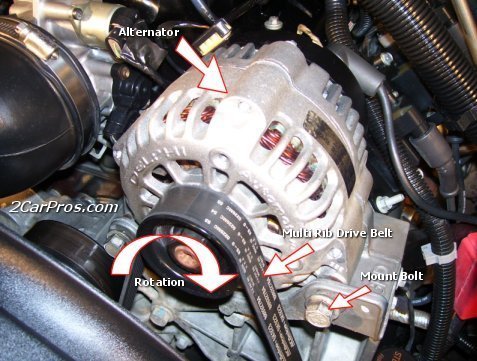There should be a very large fuse bolted into the under-hood fuse box specifically for this mistake. Beyond that, we need to know exactly what is wrong with the generator to determine what caused it.
To dig a little deeper, all "AC Generators" develop alternating current. There's no way to store that in a battery, so they all have at least six "diodes" to turn it into direct current that can be stored. Diodes are one-way valves for electrical current flow. Their second function is to block reverse current flow out of the battery when the engine is not running. On rare occasions a diode will short, but it takes one diode in each set of three to create a dead short. On older models that would quickly burn out a fuse link wire. On newer models it blows the bolted-in fuse.
The problem when the battery cables are reversed is those diodes become "forward-biased", meaning they're turned on and look like a dead short. There's nothing to limit current flow through them until the fuse or fuse link wire burns open. That can mean hundreds of amps for diodes that are designed to handle just a fraction of that. If for some reason the fuse device didn't break the circuit, shorted diodes commonly overheat very quickly, then burn off one of their connections, then that removes the dead short.
There's only three things you can get from an AC generator during a professional "full-load output current" test. That is its maximum rated current, no current, or exactly one third of the maximum rated current. There's a few different ways you can get no output. Full output means the generator is working properly. When only one of the six diodes is bad, you lose two thirds of the output capacity. That often leaves you with less than what's needed by the entire electrical system. The battery has to make up the difference as it slowly runs down over days or weeks.
To go into more detail, you have to specify the symptoms or observations, and what any testing has shown up. Besides the generator, there are going to be a number of other blown fuses. All computer modules also have diodes installed between their ground and all power supply wires. They're in there for the same purpose, but connected in a different manner. When the battery is connected properly, those diodes are "reverse-biased", meaning they're turned off and act like they aren't even there. It's only when the battery is connected backward that those diodes become forward-biased, turn on, and create a dead short specifically to cause the fuse to blow. That blown fuse saves the expensive computer, but that fuse has to be replaced for the computer to work again.
That story applies to every car brand and model. To get more specific, VW is well-known, along with a few other manufacturers, to build in a number of tricks to force you to go back to the dealer. You may find, even after replacing all the blown fuses, the engine may not start, or some other functions don't work. Often a number of computers will electrically lock up and require the dealer to unlock them. Often the repair involves trailering the vehicle to the dealer.
Here's links to some related articles you find of interest:
https://www.2carpros.com/articles/understanding-the-function-and-mechanics-of-an-alternator
https://www.2carpros.com/articles/how-to-check-a-car-alternator
https://www.2carpros.com/articles/resolving-reverse-battery-connection-in-cars-a-step-by-step-repair-guide
Saturday, December 21st, 2024 AT 4:43 PM



